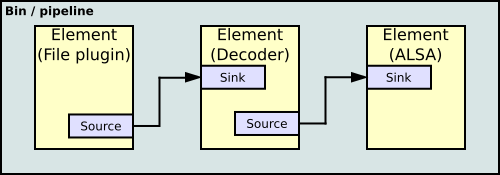The topic of this article may not meet Wikipedia's general notability guideline .(November 2025) |
A filter graph is used in multimedia processing - for example, to capture video from a webcam. Filters take input, process it (or change the input), and then output the processed data. For example: a video codec takes raw uncompressed video and compresses it using a video standard such as H.264. To compress a multimedia stream a filter graph could have two inputs:
Contents
- Audio
- Video
Usually these are expressed as file sources. The file sources would feed compression filters, the output of the compression filters would feed into a multiplexer that would combine the two inputs and produce a single output. (An example of a multiplexer would be an MPEG transport stream creator.) Finally the multiplexer output feeds into a file sink, which would create a file from the output.

A filter graph in multimedia processing is a directed graph. Edges represent one-way data flow and vertices represent a data-processing step. Pins or pads identify the connection points between vertices and edges.